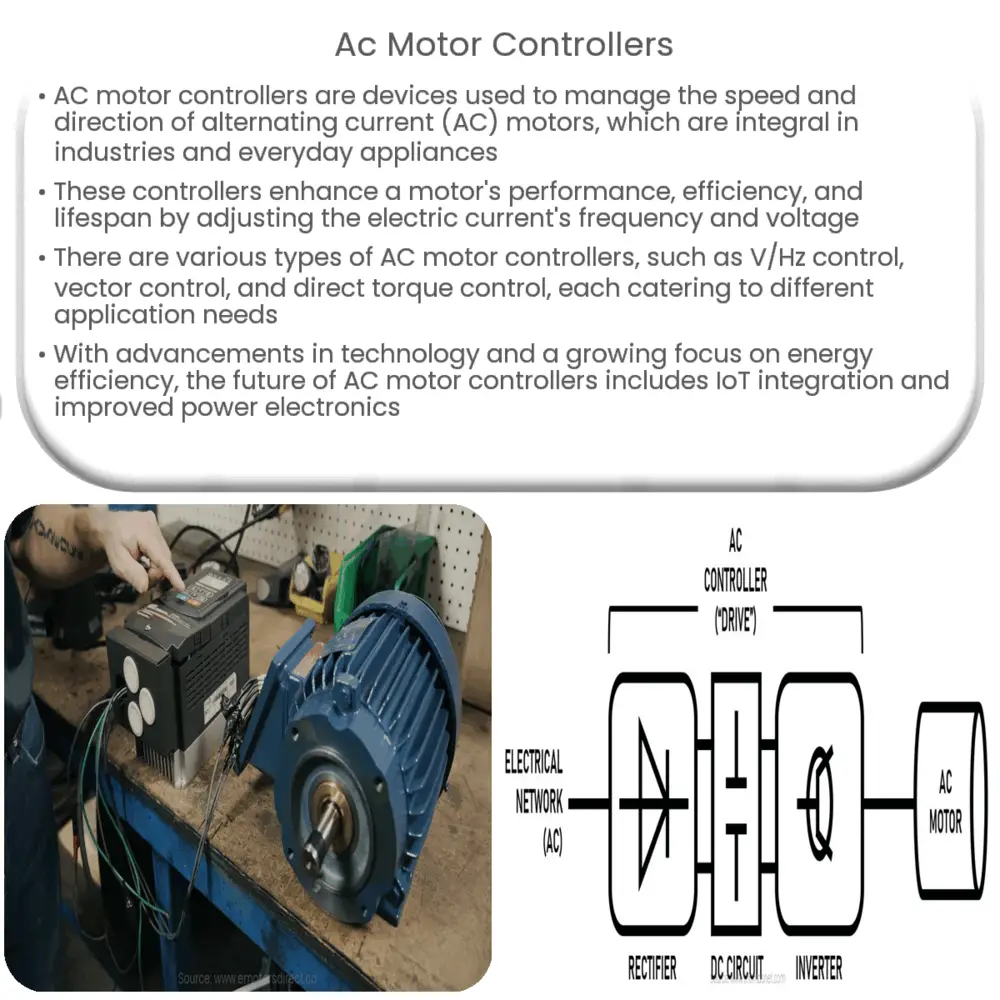Explore the fascinating world of AC motor controllers: their basics, operation, types, applications, future trends, and their critical role in modern technology.

Understanding AC Motor Controllers
An AC motor controller, as the name implies, is an electronic device that is used to control the speed and direction of an alternating current (AC) motor. The AC motor is a key element in a wide variety of applications such as industrial machines, electric vehicles, home appliances, and more.
Basics of AC Motors
Before we delve into AC motor controllers, it’s essential to understand the basic operation of AC motors. An AC motor uses the power of alternating current to convert electrical energy into mechanical energy. The AC motor comes in two primary types: the synchronous motor and the induction motor.
- The synchronous motor rotates at a speed that is synchronized with the frequency of the AC supply. This type of motor is used when precise constant speed is required.
- The induction motor, also known as an asynchronous motor, operates by creating a rotating magnetic field within the stator which induces a current in the rotor, causing it to spin. Induction motors are commonly used because they’re robust, efficient, and require little maintenance.
The Need for AC Motor Controllers
While AC motors are versatile and powerful, their full potential can only be tapped when they are paired with an effective AC motor controller. These controllers allow for greater control over the motor’s operation, thereby enhancing its performance, efficiency, and lifespan.
An AC motor controller is essentially an electronic “brain” that directs the motor’s operation. It adjusts the frequency and voltage of the electric current to control the motor’s speed and direction. Some advanced controllers can also provide features like soft-start capabilities (a feature that gradually increases the motor’s speed to lessen mechanical stress), motor protection, and advanced diagnostics.
Working Principles of AC Motor Controllers
The operation of an AC motor controller is largely based on power electronics and microprocessor technology. The AC power input is first rectified into a DC voltage. This DC voltage is then inverted back into an AC voltage to control the speed of the AC motor. The frequency and amplitude of this inverted AC voltage can be varied to control the speed and torque of the motor. The microprocessor within the controller manages these processes, based on the user inputs and feedback from the motor, making sophisticated control schemes possible.
Types of AC Motor Controllers
There are numerous types of AC motor controllers available in the market, tailored to meet various application requirements. Here are some of the common types:
- V/Hz control: One of the most basic types of AC motor controllers, it maintains a constant ratio of voltage to frequency (V/Hz) to control the speed of the motor.
- Vector control: Also known as field-oriented control, this type of controller offers high-performance control of both motor speed and torque. It treats the motor as a two-part system comprising torque and magnetic flux, controlling each part independently.
- Direct torque control (DTC): DTC provides a more direct control of motor torque and flux, leading to quick response times and high efficiency. It is commonly used in high-performance applications.
AC Motor Controllers in the Real World
AC motor controllers are integral parts of various applications in the industrial and commercial sectors. They are essential for conveyor systems, elevators, pumps, fans, and machine tools where precise control over motor speed and torque is necessary. In the automotive industry, they are crucial for controlling electric vehicle motors. In the consumer sector, they can be found in appliances like washing machines, air conditioners, and refrigerators.
Future Trends in AC Motor Controllers
With the increasing demand for energy efficiency and precise motor control, the evolution of AC motor controllers is bound to continue. Trends such as the integration of IoT (Internet of Things) for predictive maintenance, real-time monitoring, and remote control are becoming more prevalent. Furthermore, the continuous development in power electronics and microprocessor technology promises more compact, powerful, and cost-effective AC motor controllers in the future.
Conclusion
In conclusion, AC motor controllers play a crucial role in many modern technologies, allowing for precise control of motor speed and direction. Understanding their principles of operation, types, applications, and future trends helps in making informed choices when it comes to choosing the right controller for a specific application. As technologies continue to evolve, we can expect AC motor controllers to become even more efficient, reliable, and integrated into our daily lives.

